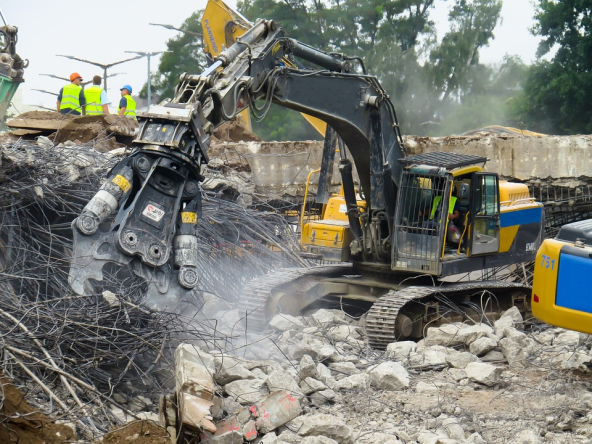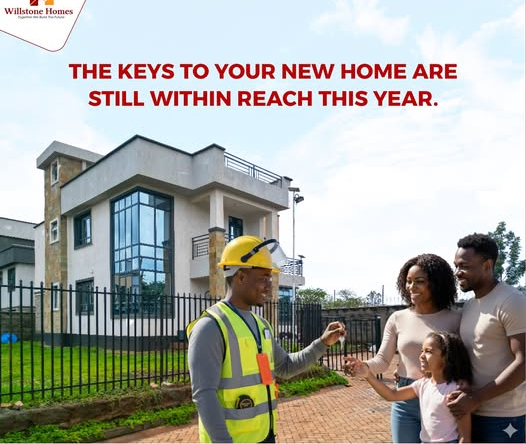As Nairobi’s city boundaries blur into rapidly growing suburbs, a new chapter is unfolding in how modern estates are designed. Perimeter walls, once seen as the gold standard of security and privacy, are quietly being replaced by green buffer zones—especially in places like Ruiru East and Syokimau. This shift is more than aesthetic; it marks a key evolution in sustainable housing in Nairobi, where livability, environmental consciousness, and long-term planning are becoming top priorities for developers and buyers alike.
This new model reflects the changing needs of urban dwellers who are seeking not just a house, but a healthier, more open way of living. And it’s satellite towns that are leading the way.
Rethinking Walls in the Age of Sustainability
For decades, Nairobi’s real estate market favored walled enclosures. Tall concrete barriers topped with electric wires became synonymous with safety in residential development. Gated communities in areas like Syokimau, Ruiru, and Athi River were built with a fortress mindset. However, as both population density and awareness about sustainable housing in Nairobi grow, these barriers are being re-evaluated.
Today, developers and urban planners are leaning into greener alternatives: landscaped berms, open sight lines, and integrated natural zones. These serve as physical boundaries while maintaining airflow, visibility, and a sense of openness. The idea is not to eliminate safety, but to redesign it in a way that enhances both security and sustainability.
Read Also: Why the Lang’ata Property Market Is Nairobi’s Smartest Buy-to-Let Opportunity Right Now
The Appeal of Green Buffer Zones
Green buffer zones are not simply about curb appeal. These planned vegetated areas at the edges of estates offer multiple functions. They act as ecological soft boundaries, provide stormwater management benefits, reduce noise pollution, and create microclimates that cool the surrounding environment. For residents, they also foster a sense of well-being by reconnecting urban life with nature.
In Syokimau, newer developments along Katani and Mlolongo roads have started using tree-lined peripheries instead of traditional walls. Similarly, Ruiru East estates are incorporating terraced landscaping and hedgerows to blend seamlessly with adjacent land. These initiatives position sustainable housing in Nairobi as more than a luxury—it’s becoming a practical response to urban pressures.
What’s Driving the Change?
Several converging forces are fueling this shift:
1. Evolving County Planning Policies: Counties like Machakos and Kiambu are revising zoning and planning policies to encourage developments that are community-conscious and environmentally responsible. Developers who submit plans without oppressive concrete boundaries often receive faster approvals.
2. Drainage and Climate Considerations: Wall-to-wall development has proven detrimental in flood-prone areas. In contrast, green zones improve drainage, reduce runoff, and help manage stormwater more naturally—a critical component of sustainable housing in Nairobi’s wetter zones.
3. Market Demand for Greener Spaces: Homebuyers are increasingly seeking homes that offer more than just square footage. They want breathable space, community connectivity, and access to greenery. Green buffer zones are becoming a visible marker of modern, sustainable housing.
4. Technological Alternatives to Traditional Security: With surveillance cameras, biometric access, and drone monitoring becoming more accessible, developers can offer high security without high walls. This tech-forward approach aligns well with younger, urban buyers.
Read Also: Are Gated Communities in Syokimau Becoming Too Dense?
Case Study: Ruiru East’s Quiet Green Revolution
In Ruiru East, just off the Eastern Bypass, a cluster of new residential projects is setting a new precedent. Instead of 8-foot walls, these estates are framed by layered trees, low hedges, and landscaped mounds that curve naturally along the boundary lines. Some even include walking paths, outdoor lighting, and integrated fencing made of eco-materials.
Residents report a stronger sense of community, improved ventilation, and an overall perception of openness without compromising safety. These features, once thought experimental, are now proving to be not only viable but preferred. The transformation is gradually making Ruiru East a reference point for sustainable housing in Nairobi’s peri-urban belt.
Syokimau Responds to Density Concerns
In Syokimau, where plot maximization once ruled, developers are beginning to prioritize shared green zones over concrete boundaries. Some gated courts along Mwananchi Road and Airport View have replaced walls with landscaped common areas, trimmed shrub fences, and transparent barriers that allow visual connection to neighboring plots.
This strategy helps manage the increasing density without creating a claustrophobic feel. It also aligns with the goals of sustainable housing in Nairobi by reducing heat buildup, encouraging pedestrian mobility, and supporting local biodiversity through indigenous planting.
A Word to Developers and Homebuyers
While the shift away from perimeter walls is gaining momentum, execution matters. Developers should work with urban designers and landscape architects to ensure that green buffers are functional, beautiful, and easy to maintain. Poorly planned or neglected green zones can quickly become overgrown and unsafe.
Homebuyers interested in such estates should ask detailed questions about long-term maintenance, security integration, and community rules. When done right, these buffer zones don’t just replace walls—they enhance property value and quality of life.
Read Also: Ruaka Airbnb: Why This Suburb Is the Next Hotspot for Short-Term Rental Returns
The Future of Sustainable Housing in Nairobi
The embrace of green buffer zones by satellite towns is redefining how Nairobi grows. It signals a conscious move toward openness, ecological balance, and long-term livability. What began as a visual refreshment is now shaping into a core principle of real estate design.
For investors, developers, and buyers alike, recognizing the value of this evolution is key. Sustainable housing in Nairobi is no longer an abstract concept or a marketing tagline. It’s the architectural language of the future—one that blends form, function, and environmental stewardship in ways that high walls never could.




